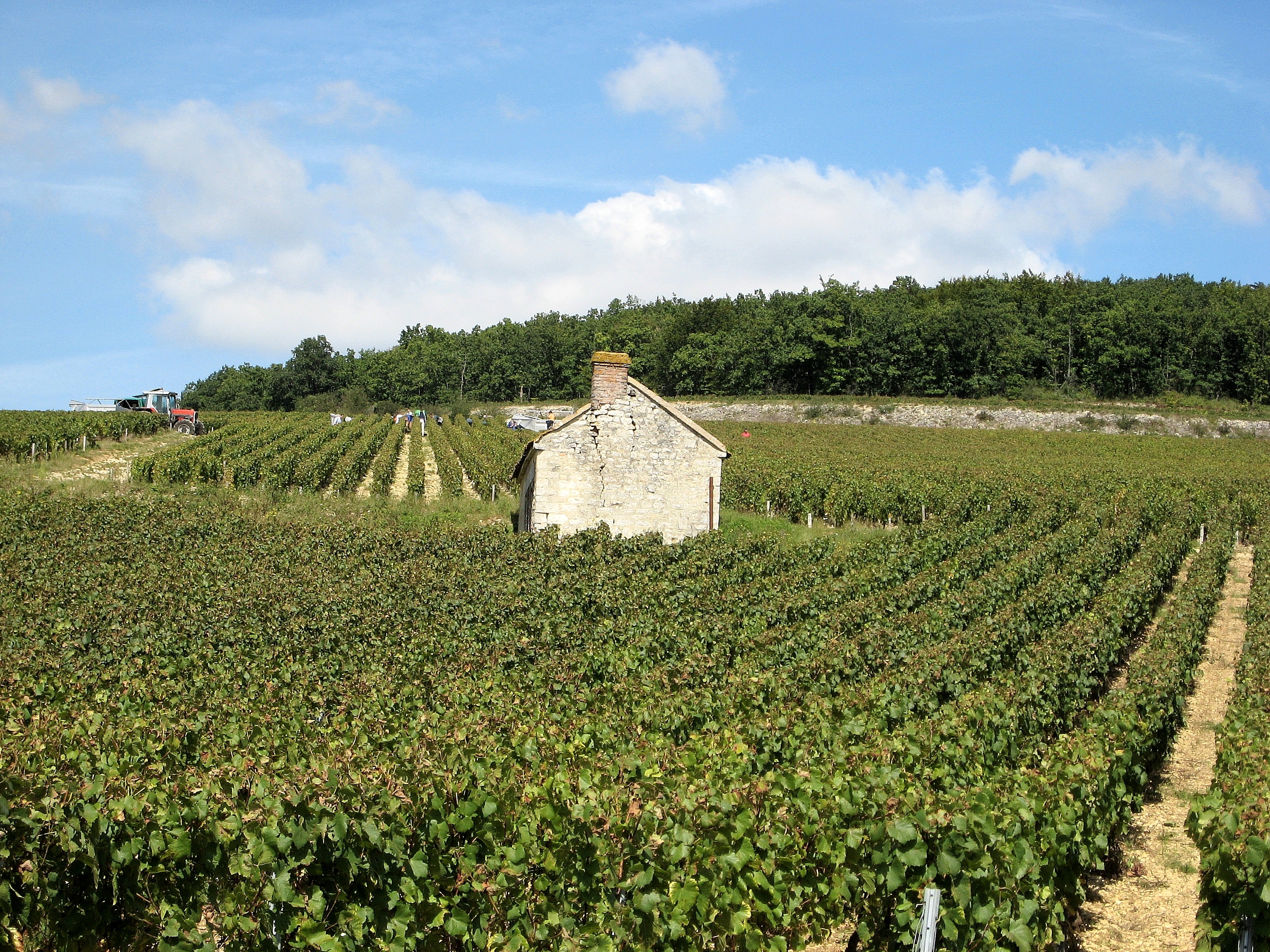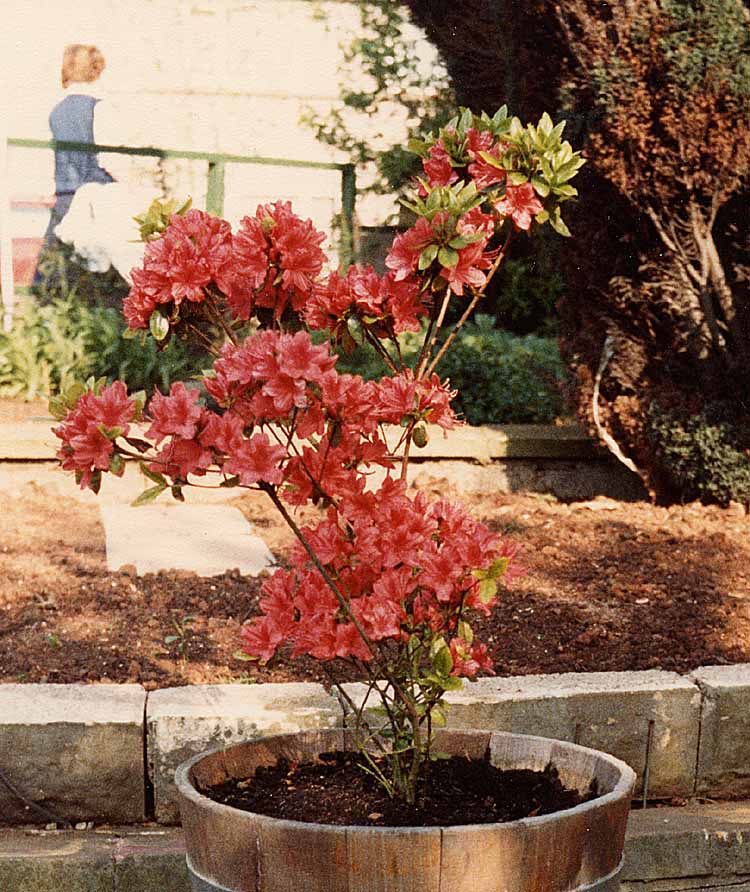|
Chlorosis
In botany, chlorosis is a condition in which leaves produce insufficient chlorophyll. As chlorophyll is responsible for the green color of leaves, chlorotic leaves are pale, yellow, or yellow-white. The affected plant has little or no ability to manufacture carbohydrates through photosynthesis and may die unless the cause of its chlorophyll insufficiency is treated and this may lead to a plant diseases called rusts, although some chlorotic plants, such as the albino '' Arabidopsis thaliana'' mutant ''ppi2'', are viable if supplied with exogenous sucrose. The word ''chlorosis'' is derived from the Greek ''khloros'' meaning "greenish-yellow", "pale green", "pale", "pallid", or "fresh". In viticulture, the most common symptom of poor nutrition in grapevines is the yellowing of grape leaves caused by chlorosis and the subsequent loss of chlorophyll. This is often seen in vineyard soils that are high in limestone such as the Italian wine region of Barolo in the Piedmont, the Span ... [...More Info...] [...Related Items...] OR: [Wikipedia] [Google] [Baidu] |
Grape Vine
''Vitis'' (grapevine) is a genus of 79 accepted species of vining plants in the flowering plant family Vitaceae. The genus is made up of species predominantly from the Northern Hemisphere. It is economically important as the source of grapes, both for direct consumption of the fruit and for fermentation to produce wine. The study and cultivation of grapevines is called viticulture. Most cultivated ''Vitis'' varieties are wind-pollinated with hermaphroditic flowers containing both male and female reproductive structures, while wild species are dieceous. These flowers are grouped in bunches called inflorescences. In many species, such as ''Vitis vinifera'', each successfully pollinated flower becomes a grape berry with the inflorescence turning into a cluster of grapes. While the flowers of the grapevines are usually very small, the berries are often large and brightly colored with sweet flavors that attract birds and other animals to disperse the seeds contained within the berrie ... [...More Info...] [...Related Items...] OR: [Wikipedia] [Google] [Baidu] |
Bakanae
or bakanae disease (, , ), from the Japanese for "foolish seedling", is a disease that infects the rice plant. It is caused by the fungus ''Gibberella fujikuroi'', the metabolism of which produces a surplus of gibberellic acid. In the plant, this acts as a growth hormone, causing hypertrophy. The affected plants, which are visibly etiolated and chlorotic, are at best infertile with empty panicles, producing no edible grains; at worst, they are incapable of supporting their own weight, topple over, and die (hence "foolish seedling disease"). The earliest known report of ''bakanae'' is from 1828; it was first described scientifically in 1898 by Japanese researcher Shotaro Hori, who showed that the causative agent was fungal. at Plant-Hormones.info The fungus affects rice crops in Asia, Africa, ... [...More Info...] [...Related Items...] OR: [Wikipedia] [Google] [Baidu] |
Citrus Limon Chlorosis
''Citrus'' is a genus of flowering trees and shrubs in the rue family, Rutaceae. Plants in the genus produce citrus fruits, including important crops such as oranges, lemons, grapefruits, pomelos, and limes. The genus ''Citrus'' is native to South Asia, East Asia, Southeast Asia, Melanesia, and Australia. Various citrus species have been used and domesticated by indigenous cultures in these areas since ancient times. From there its cultivation spread into Micronesia and Polynesia by the Austronesian expansion (c. 3000–1500 BCE); and to the Middle East and the Mediterranean (c. 1200 BCE) via the incense trade route, and onwards to Europe and the Americas. History Citrus plants are native to subtropical and tropical regions of Asia, Island Southeast Asia, Near Oceania, and northeastern Australia. Domestication of citrus species involved much hybridization and introgression, leaving much uncertainty about when and where domestication first happened. A genomic, phylogenic, and ... [...More Info...] [...Related Items...] OR: [Wikipedia] [Google] [Baidu] |
Burgundy (wine)
Burgundy wine ( or ') is made in the Burgundy region of eastern France, in the valleys and slopes west of the Saône, a tributary of the Rhône. The most famous wines produced here, and those commonly referred to as "Burgundies," are dry red wines made from pinot noir grapes and white wines made from chardonnay grapes. Red and white wines are also made from other grape varieties, such as gamay and aligoté, respectively. Small amounts of rosé and sparkling wines are also produced in the region. Chardonnay-dominated Chablis and gamay-dominated Beaujolais are recognised as part of the Burgundy wine region, but wines from those subregions are usually referred to by their own names rather than as "Burgundy wines". Burgundy has a higher number of ' (AOCs) than any other French region, and is often seen as the most '-conscious of the French wine regions. The various Burgundy AOCs are classified from carefully delineated ' vineyards down to more non-specific regional appellations. T ... [...More Info...] [...Related Items...] OR: [Wikipedia] [Google] [Baidu] |
Rice
Rice is the seed of the grass species '' Oryza sativa'' (Asian rice) or less commonly '' Oryza glaberrima'' (African rice). The name wild rice is usually used for species of the genera '' Zizania'' and ''Porteresia'', both wild and domesticated, although the term may also be used for primitive or uncultivated varieties of '' Oryza''. As a cereal grain, domesticated rice is the most widely consumed staple food for over half of the world's human population,Abstract, "Rice feeds more than half the world's population." especially in Asia and Africa. It is the agricultural commodity with the third-highest worldwide production, after sugarcane and maize. Since sizable portions of sugarcane and maize crops are used for purposes other than human consumption, rice is the most important food crop with regard to human nutrition and caloric intake, providing more than one-fifth of the calories consumed worldwide by humans. There are many varieties of rice and culinary preferences t ... [...More Info...] [...Related Items...] OR: [Wikipedia] [Google] [Baidu] |
Azalea
Azaleas are flowering shrubs in the genus ''Rhododendron'', particularly the former sections '' Tsutsusi'' (evergreen) and '' Pentanthera'' (deciduous). Azaleas bloom in the spring (April and May in the temperate Northern Hemisphere, and October and November in the Southern Hemisphere), their flowers often lasting several weeks. Shade tolerant, they prefer living near or under trees. They are part of the family Ericaceae. Cultivation Plant enthusiasts have selectively bred azaleas for hundreds of years. This human selection has produced over 10,000 different cultivars which are propagated by cuttings. Azalea seeds can also be collected and germinated. Azaleas are generally slow-growing and do best in well-drained acidic soil (4.5–6.0 pH). Fertilizer needs are low. Some species need regular pruning. Azaleas are native to several continents including Asia, Europe and North America. They are planted abundantly as ornamentals in the southeastern US, southern Asia, and part ... [...More Info...] [...Related Items...] OR: [Wikipedia] [Google] [Baidu] |
Asteraceae
The family Asteraceae, alternatively Compositae, consists of over 32,000 known species of flowering plants in over 1,900 genera within the order Asterales. Commonly referred to as the aster, daisy, composite, or sunflower family, Compositae were first described in the year 1740. The number of species in Asteraceae is rivaled only by the Orchidaceae, and which is the larger family is unclear as the quantity of extant species in each family is unknown. Most species of Asteraceae are annual, biennial, or perennial herbaceous plants, but there are also shrubs, vines, and trees. The family has a widespread distribution, from subpolar to tropical regions in a wide variety of habitats. Most occur in hot desert and cold or hot semi-desert climates, and they are found on every continent but Antarctica. The primary common characteristic is the existence of sometimes hundreds of tiny individual florets which are held together by protective involucres in flower heads, or more t ... [...More Info...] [...Related Items...] OR: [Wikipedia] [Google] [Baidu] |
Crop
A crop is a plant that can be grown and harvested extensively for profit or subsistence. When the plants of the same kind are cultivated at one place on a large scale, it is called a crop. Most crops are cultivated in agriculture or hydroponics. Crops may include macroscopic fungus (e.g. mushrooms) and marine macroalga (e.g. seaweed), some of which are grown in aquaculture. Most crops are harvested as food for humans or fodder for livestock. Some crops are gathered from the wild often in a form of intensive gathering (e.g. ginseng, yohimbe, and eucommia). Important non-food crops include horticulture, floriculture and industrial crops. Horticulture crops include plants used for other crops (e.g. fruit trees). Floriculture crops include bedding plants, houseplants, flowering garden and pot plants, cut cultivated greens, and cut flowers. Industrial crops are produced for clothing (fiber crops e.g. cotton), biofuel (energy crops, algae fuel), or medicine (medic ... [...More Info...] [...Related Items...] OR: [Wikipedia] [Google] [Baidu] |
Weed
A weed is a plant considered undesirable in a particular situation, "a plant in the wrong place", or a plant growing where it is not wanted.Harlan, J. R., & deWet, J. M. (1965). Some thoughts about weeds. ''Economic botany'', ''19''(1), 16-24. This introduces the concept of humans and their goals in a particular setting.Holzner, W., & Numata, M. (Eds.). (2013). ''Biology and ecology of weeds'' (Vol. 2). Springer Science & Business Media. The concept of weeds is particularly significant in agriculture, where the aim is growing crops or pastures of a single species, or a mixture of a few desired species. In such environments, other plant species are considered undesirable and therefore a weed. Besides, some weeds have undesirable characteristics making them a plant pest in most human settings.Harlan, J. R., & deWet, J. M. (1965). Some thoughts about weeds. ''Economic botany'', ''19''(1), 16-24.Holzner, W., & Numata, M. (Eds.). (2013). ''Biology and ecology of weeds'' (Vol. 2). Spri ... [...More Info...] [...Related Items...] OR: [Wikipedia] [Google] [Baidu] |
Herbicide
Herbicides (, ), also commonly known as weedkillers, are substances used to control undesired plants, also known as weeds.EPA. February 201Pesticides Industry. Sales and Usage 2006 and 2007: Market Estimates. Summary in press releasMain page for EPA reports on pesticide use ihere Selective herbicides control specific weed species, while leaving the desired crop relatively unharmed, while non-selective herbicides (sometimes called total weedkillers in commercial products) can be used to clear waste ground, industrial and construction sites, railways and railway embankments as they kill all plant material with which they come into contact. Apart from selective/non-selective, other important distinctions include ''persistence'' (also known as ''residual action'': how long the product stays in place and remains active), ''means of uptake'' (whether it is absorbed by above-ground foliage only, through the roots, or by other means), and ''mechanism of action'' (how it works). Histo ... [...More Info...] [...Related Items...] OR: [Wikipedia] [Google] [Baidu] |
Pesticide
Pesticides are substances that are meant to control pests. This includes herbicide, insecticide, nematicide, molluscicide, piscicide, avicide, rodenticide, bactericide, insect repellent, animal repellent, microbicide, fungicide, and lampricide. The most common of these are herbicides which account for approximately 80% of all pesticide use. Most pesticides are intended to serve as plant protection products (also known as crop protection products), which in general, protect plants from weeds, fungi, or insects. As an example, the fungus '' Alternaria solani'' is used to combat the aquatic weed '' Salvinia''. In general, a pesticide is a chemical (such as carbamate) or biological agent (such as a virus, bacterium, or fungus) that deters, incapacitates, kills, or otherwise discourages pests. Target pests can include insects, plant pathogens, weeds, molluscs, birds, mammals, fish, nematodes (roundworms), and microbes that destroy property, cause nuisance, or spr ... [...More Info...] [...Related Items...] OR: [Wikipedia] [Google] [Baidu] |
Soil PH
Soil pH is a measure of the acidity or basicity (alkalinity) of a soil. Soil pH is a key characteristic that can be used to make informative analysis both qualitative and quantitatively regarding soil characteristics. pH is defined as the negative logarithm (base 10) of the activity of hydronium ions ( or, more precisely, ) in a solution. In soils, it is measured in a slurry of soil mixed with water (or a salt solution, such as ), and normally falls between 3 and 10, with 7 being neutral. Acid soils have a pH below 7 and alkaline soils have a pH above 7. Ultra-acidic soils (pH 9) are rare. Soil pH is considered a master variable in soils as it affects many chemical processes. It specifically affects plant nutrient availability by controlling the chemical forms of the different nutrients and influencing the chemical reactions they undergo. The optimum pH range for most plants is between 5.5 and 7.5; however, many plants have adapted to thrive at pH value ... [...More Info...] [...Related Items...] OR: [Wikipedia] [Google] [Baidu] |








